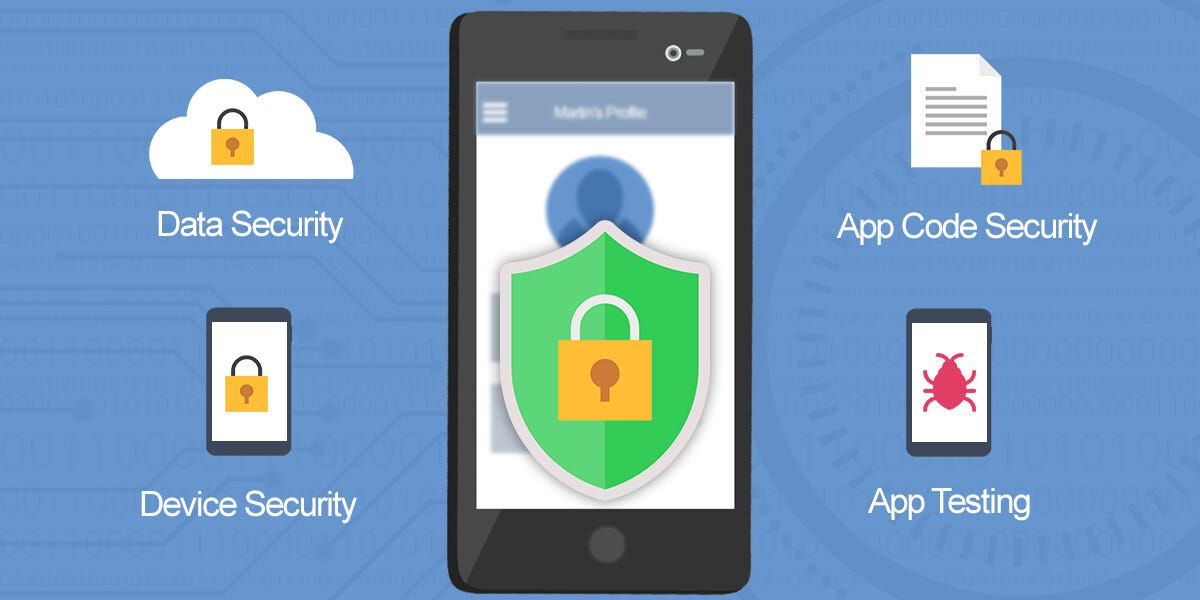
In today's digital landscape, mobile app security is more critical than ever. With billions of mobile devices worldwide and increasing cyber threats, implementing robust security measures is essential for protecting user data and maintaining trust.
Understanding Mobile Security Threats
Common Security Vulnerabilities
Mobile applications face various security challenges:
- Data breaches - Unauthorized access to sensitive information
- Malware attacks - Malicious software targeting mobile devices
- Man-in-the-middle attacks - Interception of data transmission
- Insecure data storage - Poor protection of stored data
- Authentication bypass - Weak authentication mechanisms
Essential Security Best Practices
1. Secure Data Transmission
Always use encrypted connections for data transmission:
- Implement HTTPS/TLS for all network communications
- Use certificate pinning to prevent man-in-the-middle attacks
- Validate SSL certificates properly
- Avoid transmitting sensitive data over unencrypted channels
2. Robust Authentication and Authorization
Implement strong user authentication mechanisms:
- Multi-factor authentication (MFA)
- Biometric authentication (fingerprint, face recognition)
- Strong password policies
- Session management and timeout controls
- OAuth 2.0 and OpenID Connect for secure authorization
3. Secure Data Storage
Protect sensitive data stored on devices:
- Use device keychain/keystore for sensitive data
- Encrypt data at rest using strong encryption algorithms
- Avoid storing sensitive information in plain text
- Implement proper key management practices
- Use secure databases with encryption support
4. Code Protection and Obfuscation
Protect your application code from reverse engineering:
- Code obfuscation to make reverse engineering difficult
- Remove debug information from production builds
- Implement anti-tampering mechanisms
- Use runtime application self-protection (RASP)
Platform-Specific Security Considerations
iOS Security Features
- App Transport Security (ATS) enforcement
- Keychain Services for secure storage
- Touch ID and Face ID integration
- App Sandbox security model
Android Security Features
- Android Keystore system
- Network Security Configuration
- Biometric authentication APIs
- App signing and verification
Security Testing and Monitoring
Regular Security Assessments
Implement comprehensive security testing:
- Static Application Security Testing (SAST)
- Dynamic Application Security Testing (DAST)
- Interactive Application Security Testing (IAST)
- Penetration testing by security experts
Continuous Monitoring
- Real-time threat detection
- Security incident response planning
- Regular security updates and patches
- User behavior analytics
Compliance and Regulations
Ensure compliance with relevant security standards:
- GDPR - General Data Protection Regulation
- CCPA - California Consumer Privacy Act
- HIPAA - Health Insurance Portability and Accountability Act
- PCI DSS - Payment Card Industry Data Security Standard
Conclusion
Mobile app security is not a one-time implementation but an ongoing process that requires continuous attention and updates. By following these best practices and staying informed about emerging threats, developers can build more secure applications that protect user data and maintain trust.
At Fusion Infotek, we prioritize security in every mobile application we develop. Our team of experts ensures that your app meets the highest security standards while delivering exceptional user experience.
